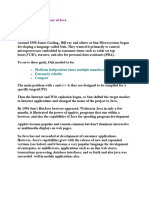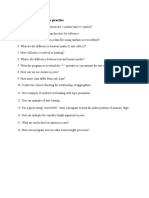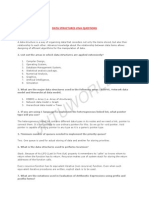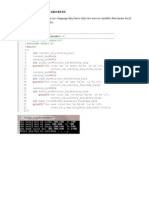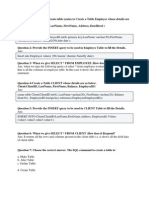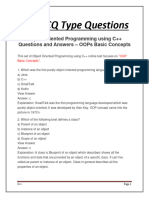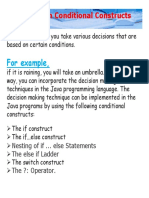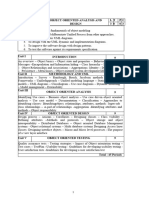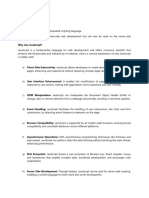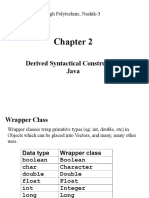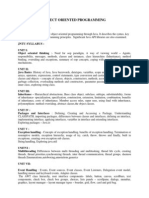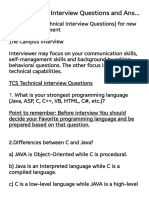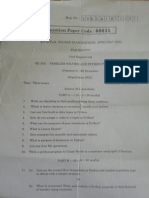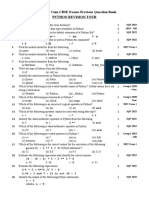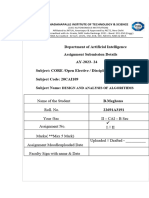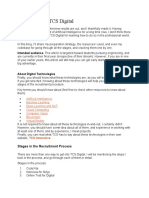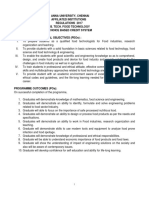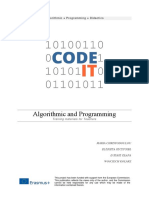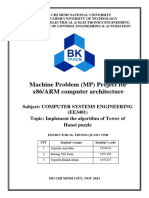0% found this document useful (0 votes)
371 views12 pagesTcs Questions
The document discusses differences between C and Java programming languages. Some key differences include:
- C is a procedural language while Java is object-oriented. C uses pointers explicitly while Java handles memory management behind the scenes.
- C is compiled to machine code while Java is compiled to bytecode that is interpreted. C uses low-level programming while Java is higher-level.
- Java supports features like method overloading and exception handling while C does not support overloading and uses error codes instead of exceptions.
- The standard input/output functions differ between the two languages. C uses printf/scanf while Java uses System.out.print and System.in.read.
Uploaded by
Kajol MathuriaCopyright
© © All Rights Reserved
We take content rights seriously. If you suspect this is your content, claim it here.
Available Formats
Download as TXT, PDF, TXT or read online on Scribd
0% found this document useful (0 votes)
371 views12 pagesTcs Questions
The document discusses differences between C and Java programming languages. Some key differences include:
- C is a procedural language while Java is object-oriented. C uses pointers explicitly while Java handles memory management behind the scenes.
- C is compiled to machine code while Java is compiled to bytecode that is interpreted. C uses low-level programming while Java is higher-level.
- Java supports features like method overloading and exception handling while C does not support overloading and uses error codes instead of exceptions.
- The standard input/output functions differ between the two languages. C uses printf/scanf while Java uses System.out.print and System.in.read.
Uploaded by
Kajol MathuriaCopyright
© © All Rights Reserved
We take content rights seriously. If you suspect this is your content, claim it here.
Available Formats
Download as TXT, PDF, TXT or read online on Scribd
/ 12








